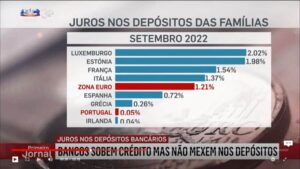GBP: No more miserable than usual
Although it was a losing week for the pound, there was nothing too dramatic and its average loss against the other major currencies was only 0.2%. Sterling gave up two fifths of a US cent and a quarter of a euro cent. It was virtually unchanged against the safe-haven Japanese yen and Swiss franc. There were no horror stories from the UK economic data and no glorious triumphs. When the British Retail Consortium reported that retail sales last month were “the worst June on record” and cried out for clarity on Brexit, investors saw nothing remarkable. Gross domestic product growth of 0.3% in the three months to May was balanced by the NIESR’s estimate that GDP shrank by 0.1% in the second quarter.
The political atmosphere in Westminster remained as toxic as ever, with accusations of disloyalty and toadying on one side of the house and anti-Semitism on the other. An effort by Parliament to thwart a no-deal Brexit was largely unsuccessful.
EUR: A chink of light from Germany
On average the euro was unchanged against the other majors. It lost an insignificant tenth of a cent to the US dollar and went up by an equivalent proportion against the Japanese yen and Swiss franc. Economic data from the euro zone did not do a whole lot of damage, or good. The run of weak manufacturing data from Germany got a bit of a break with a 0.3% monthly increase in industrial production but wholesale prices there went down by 0.5%. The latest Economic Forecast from the European Commission estimated Euroland growth at 1.2% this year and by 1.4% in 2020, slightly less than previously projected.
There was general approval from investors at the change of government in Greece. Last weekend’s general election replaced Alexis Tsipras and the faux-radical Syriza with Kyriakos Mitsotakis and New Democracy, a conventional centre-right party seen to be more pro-business. There was no immediate knock-on benefit for the euro but the result does dial down the Club-Med risk to the single currency.
USD: July rate cut on the cards
There were two big events in the dollar’s week: last Friday’s US employment report and the Federal Reserve chairman’s testimony to Congress. The first was positive for the dollar, the second not so much. Nonfarm payrolls went up by 224k in June, and including revisions to earlier months there were 53k more people in work that analysts had forecast.
The strong numbers made no difference to the Fed’s inclination to lower interest rates. Chairman Jerome Powell told the House Financial Services Committee that “uncertainties around trade tensions and concerns about the strength of the global economy continue to weigh on the US outlook”. When offered the chance to do so, he said nothing to play down the idea of a July cut of 25 or even 50 basis points. The dollar strengthened on Friday and fell on Wednesday and Thursday, leaving it a net two fifths of a cent lower against sterling.
CAD: Help from oil, not from jobs
A week of mixed fortunes eventually left the Loonie in a good position. It was the top performer on the major currencies, adding a tenth of a US cent and strengthening by three quarters of a cent against sterling. Oil prices played a significant part in its success as WTI crude rose 6.6% to a seven-week high. The Canadian data could have been more helpful though. Last Friday’s Labour Force Survey showed a loss of 2.2k jobs in June, a far cry from May’s 27.7k increase and well short of the expected 10k rise. The seasonally-adjusted Ivey purchasing managers’ index was three and a half points lower on the month at 52.4, missing forecast.
On Wednesday, the Bank of Canada kept its benchmark rate target steady at 1.75%, and the statement made the obligatory nod to an outlook “clouded by persistent trade tensions”. However, the subsequent press conference gave the impression that the BoC shares the same worries as the Fed.
AUD: Softer confidence all round
NAB’s Monthly Business Survey found that “the business sector has lost significant momentum over the past year or so” and that “conditions remain below average”. The tone of the report was more one of caution than of optimism: “Forward looking indicators suggest that there is unlikely to be a material improvement in conditions over the next few months with forward orders remaining very weak. This suggests the pipeline of demand is weak and is consistent with below average confidence.”
The Westpac consumer confidence survey was no more positive, opening with the observation that “The fall in sentiment this month is troubling”. A further rate cut by the RBA, a stimulative tax package from the government and signs of stabilisation in the housing market ought to have improved confidence but in fact the index fell four points – 4.1% – between June and July. Taken together – and in the absence of any other salient data – the two reports served to depress the Aussie. It lost a third of a US cent and fell a fifth of a cent against sterling.
NZD: Accidental gains from USD moves
Close on the heels of the Canadian dollar, the Kiwi had a moderately successful week. It was just about unchanged against the US dollar and went up by three quarters of a cent against sterling. Its gains came mostly by default. The few NZ ecostats showed food prices falling 0.7% in June, electronic card retail sales flat on the month and the Business NZ manufacturing purchasing managers’ index picking up by less than expected to 51.3 from 50.2. BNZ’s senior economist observed colourfully that “the latest PMI might best be described as doing doggy paddle, with both ups and downs around some of the main PMI sub-index values”.
The main movers for the Kiwi were the same as those for the USD. Last Friday’s strong US payrolls number sent it lower and the Fed chairman’s rate-cut hints pointed it north. In both cases it was the implications for relative interest rates that caused the move.
For corporate partnerships enquiries, please call: +44 (0) 203 823 0526 or email: corporatepartnerships@moneycorp.com
For personal partnerships enquiries, please call: +44 (0) 207 828 7000 or email: partners@moneycorp.com
To find out more about suitable solutions, please call us on: +44 (0) 207 823 7400, email: partners@moneycorp.comor, visit our website here
moneycorp is a trading name of TTT Moneycorp Limited which is authorised by the Financial Conduct Authority under the Payment Service Regulations 2017 (reference number 308919) for the provision of payment services.
For competitive exchange rates, low transfer fees, expert guidance and the special offer of your FIRST TRANSFER FREE call moneycorp on +44 (0) 207 823 7400 or visit www.moneycorp.com/portugal-resident


























